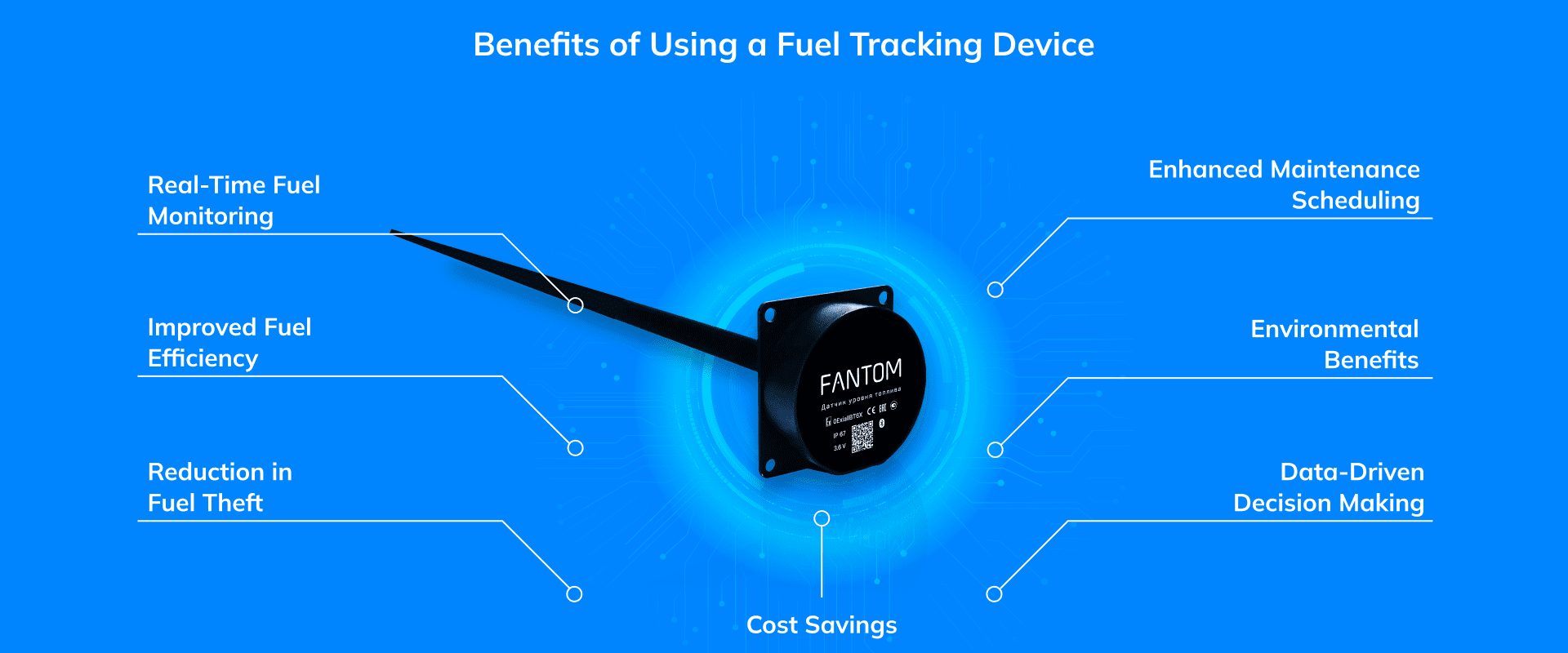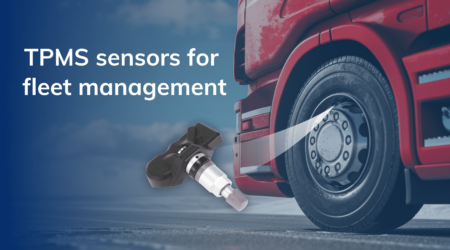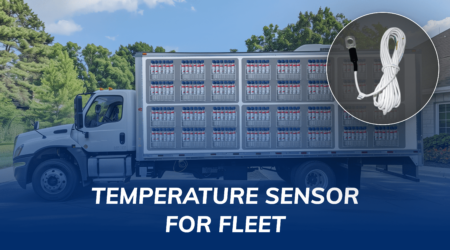How a Fuel Tracking Device Enhances Fleet Management?
Imagine you’re in charge of managing a large fleet, and fuel costs are one of your biggest challenges. With prices constantly fluctuating and environmental concerns on the rise, finding ways to optimize fuel usage becomes a top priority. What if you could have real-time insights into every drop of fuel used, making it easier to control expenses and improve efficiency? That’s where a fuel tracking device comes into play. In this blog, we’ll delve into how this innovative tool can transform your fleet management strategy, helping you save money and enhance operational efficiency. Let’s explore why a fuel tracking device is an essential asset for any fleet-focused business.
Understanding Fuel Tracking Devices
A fuel tracking device is an advanced piece of technology designed to monitor and record fuel consumption in vehicles. It provides data on fuel levels, fuel consumption rates, and even helps to detect fuel theft or anomalies. By integrating a fuel tracking device into your fleet management system, you can gain comprehensive insights into fuel usage, helping you make informed decisions to optimize your fleet’s performance.
Key Features of a Fuel Tracking Device
To fully appreciate how a fuel tracking device enhances fleet management, it’s important to understand the key features that these devices offer.
Real-Time Fuel Level Monitoring
This feature provides continuous updates on the fuel levels of each vehicle. Fleet managers can access this data through a centralized dashboard, making it easy to track and manage fuel across the entire fleet.
Fuel Consumption Reports
Detailed reports on fuel consumption help identify trends and patterns. These reports can be customized to show data for specific time periods, vehicles, or routes, providing valuable insights for optimizing fuel usage.
Fuel Theft Detection
Advanced sensors and advanced algorithms detect unusual fuel consumption patterns, indicating possible fuel theft. Alerts are generated instantly, allowing for quick investigation and action.
Route Optimization
By analyzing the fuel consumption data, fleet managers can effortlessly identify the most fuel-efficient routes. This helps in planning routes that minimize fuel usage and reduce operational costs.
Driver Behavior Analysis
Monitoring driver behavior is crucial for improving fuel efficiency. A fuel tracking device can provide data on driving habits, such as idling time, acceleration, and braking patterns. This information can be used to train drivers on more efficient driving techniques.
Integration with Fleet Management Software
The modern fuel tracking devices can seamlessly integrate with the existing fleet management software. This integration allows for a unified view of all fleet operations, making it easier to manage and optimize various aspects of the fleet.
Benefits of Using a Fuel Tracking Device
Real-Time Fuel Monitoring
One of the primary advantages of using a fuel tracking device is the ability to monitor fuel levels in real-time. This feature allows fleet managers to have up-to-the-minute information on the fuel status of each vehicle in the fleet. With real-time data, managers can make quick decisions to refuel vehicles when necessary, preventing downtime and ensuring that operations run smoothly.
Improved Fuel Efficiency
Fuel efficiency is crucial for reducing operational costs and minimizing environmental impact. A fuel tracking device helps identify significant patterns in fuel consumption, allowing fleet managers to pinpoint inefficiencies and defects. For example, excessive idling or aggressive driving can lead to higher fuel consumption. By analyzing the data provided by the fuel tracking device, managers can implement training programs for drivers to adopt more fuel-efficient driving habits.
Reduction in Fuel Theft
Fuel theft is a major concern for fleet operators. It not only leads to financial losses but also disrupts important operations. A fuel tracking device can detect unusual fuel consumption patterns, indicating potential fuel theft. With alerts and detailed reports, fleet managers can take immediate action to investigate and address any kind of suspicious activity. This proactive approach helps safeguard the fleet’s fuel supply and reduces losses.
Cost Savings
Implementing a fuel tracking device can lead to substantial cost savings. By optimizing fuel usage and reducing wastage, companies can lower their fuel expenses significantly. Additionally, the insights gained from fuel consumption data can help in planning efficient routes and schedules, further reducing fuel costs. These savings contribute directly to enhancing the profitability of the business.
Enhanced Maintenance Scheduling
Proper maintenance is essential for the longevity and performance of fleet vehicles. A fuel tracking device can provide valuable data on the health of the fuel system and engine. By monitoring fuel efficiency and consumption trends, fleet managers can detect early signs of mechanical issues. This information allows for timely maintenance and repairs, preventing costly breakdowns and extending the lifespan of the vehicles of the fleet.
Environmental Benefits
By promoting fuel-efficient driving and reducing fuel wastage, a fuel tracking device helps lower the carbon footprint of the fleet. Companies can demonstrate their commitment to sustainability and meet regulatory requirements by using technology that promotes eco-friendly practices.
Data-Driven Decision Making
In the age of big data, having access to accurate and detailed information is very valuable. A fuel tracking device provides comprehensive reports and analytics on fuel usage, helping fleet managers make data-driven decisions. Whether it’s optimizing routes, scheduling maintenance, or implementing cost-saving measures, the insights gained from fuel tracking data enable informed decision-making that enhances overall fleet management.
Implementing a Fuel Tracking Device in Your Fleet
Step 1: Assess Your Needs
Before implementing a fuel tracking device, it’s essential to assess your fleet’s specific needs. Consider factors such as size of fleet, types of vehicles in the fleet, and routes they travel. This assessment will help you choose a fuel tracking device that best suits your requirements.
Step 2: Choose the Right Device
There are various fuel tracking devices available in the market, each with its own set of features. Research different options and select a device that offers the features you need. Consider factors such as real-time monitoring, fuel theft detection, and integration capabilities of the device.
Step 3: Install the Device
Once you’ve chosen a fuel tracking device, the next step is installation. Depending on the device, installation may require professional assistance. Ensure that the device is installed correctly to ensure accurate data collection.
Step 4: Integrate with Fleet Management Software
For maximum efficiency, integrate the fuel tracking device with your existing fleet management software. This integration will provide a unified view of all fleet operations, making it easier to manage and optimize fuel usage.
Step 5: Train Your Team
It’s essential to train your team on how to use the fuel tracking device and interpret the data it provides. Ensure that drivers, fleet managers, and other relevant personnel understand the features and benefits of the device.
Step 6: Monitor and Optimize
Once the fuel tracking device is up and running, continuously monitor the data it provides. Use this data to identify areas for improvement and implement measures to optimize fuel usage. Regularly review the reports and analytics to ensure that your fleet is operating efficiently.
Real-World Examples of Fuel Tracking Device Benefits
Case Study 1: Logistics Company
A logistics company with a large fleet of trucks implemented a fuel tracking device to monitor fuel consumption. Within a few months, they noticed a significant reduction in fuel expenses. By analyzing the data, they identified drivers with inefficient driving habits and provided training to improve their driving techniques. This resulted in better fuel efficiency and reduced costs.
Case Study 2: Public Transportation
A city public transportation system installed fuel tracking devices on their buses. The real-time monitoring feature allowed them to detect and address fuel theft promptly. Additionally, the data on fuel consumption helped them optimize routes and schedules, leading to improved operational efficiency and cost savings.
Case Study 3: Construction Company
A construction company with a fleet of heavy machinery used fuel tracking devices to monitor fuel usage on their sites. The devices provided detailed reports on fuel consumption, helping them identify equipment that was not performing efficiently. By addressing these issues, they reduced fuel wastage and improved the overall productivity of their operations.
Challenges and Solutions in Implementing Fuel Tracking Devices
Challenge 1: Initial Costs
The cost of purchasing and installing the fuel tracking devices can be a concern for some of the companies. However, the long-term savings regarding fuel expenses and the improved efficiency often outweigh the initial investment.
Solution: Consider the long-term benefits and calculate the return on investment (ROI) before making a decision. Many companies find that the cost savings and operational improvements justify the initial expenditure.
Challenge 2: Data Overload
With the implementation of fuel tracking devices, companies may find themselves overwhelmed with data.
Solution: Use advanced fleet management software that can analyze and present data in an easily understandable format. Focus on key metrics that directly impact your fleet’s performance and make data-driven decisions accordingly.
Challenge 3: Resistance to Change
Introducing new technology can sometimes meet resistance from employees, especially drivers who may be wary of being monitored.
Solution: Communicate the benefits of the fuel tracking device clearly to your team. Emphasize how it will help improve efficiency, reduce costs, and promote safer driving habits. Provide training and support to ensure a smooth transition to the team.
Future Trends in Fuel Tracking Technology
Integration with Telematics
The future of fuel tracking devices lies in their integration with telematics systems.By integrating fuel tracking with telematics, fleet managers can get a holistic view of their fleet’s operations, making it easier to optimize performance and reduce costs.
AI and Machine Learning
Artificial intelligence (AI) and machine learning are set to revolutionize fuel tracking technology. These technologies can analyze vast amounts of data to identify patterns and predict future fuel consumption trends. This predictive capability allows for proactive decision-making, further enhancing fuel efficiency and reducing costs.
Enhanced Connectivity
With the advent of 5G and the Internet of Things (IoT), fuel tracking devices will become more connected and capable of providing real-time data with greater accuracy. This enhanced connectivity will lead to better integration with other fleet management systems and more efficient operations.
Sustainability Focus
As environmental concerns continue to grow, fuel tracking devices will play a crucial role in promoting sustainable fleet management practices. Future devices will likely include features that help companies track and reduce their carbon footprint, aligning with global sustainability goals.
Conclusion
A fuel tracking device is a valuable tool for enhancing and efficiency of fleet management. From real-time fuel monitoring to improved efficiency and cost savings, the benefits are numerous. By implementing a fuel tracking device, companies can optimize their operations, reduce fuel expenses, and promote eco-friendly practices. As technology continues to advance, the capabilities of fuel tracking devices will only improve, making them an essential component of modern fleet management.




